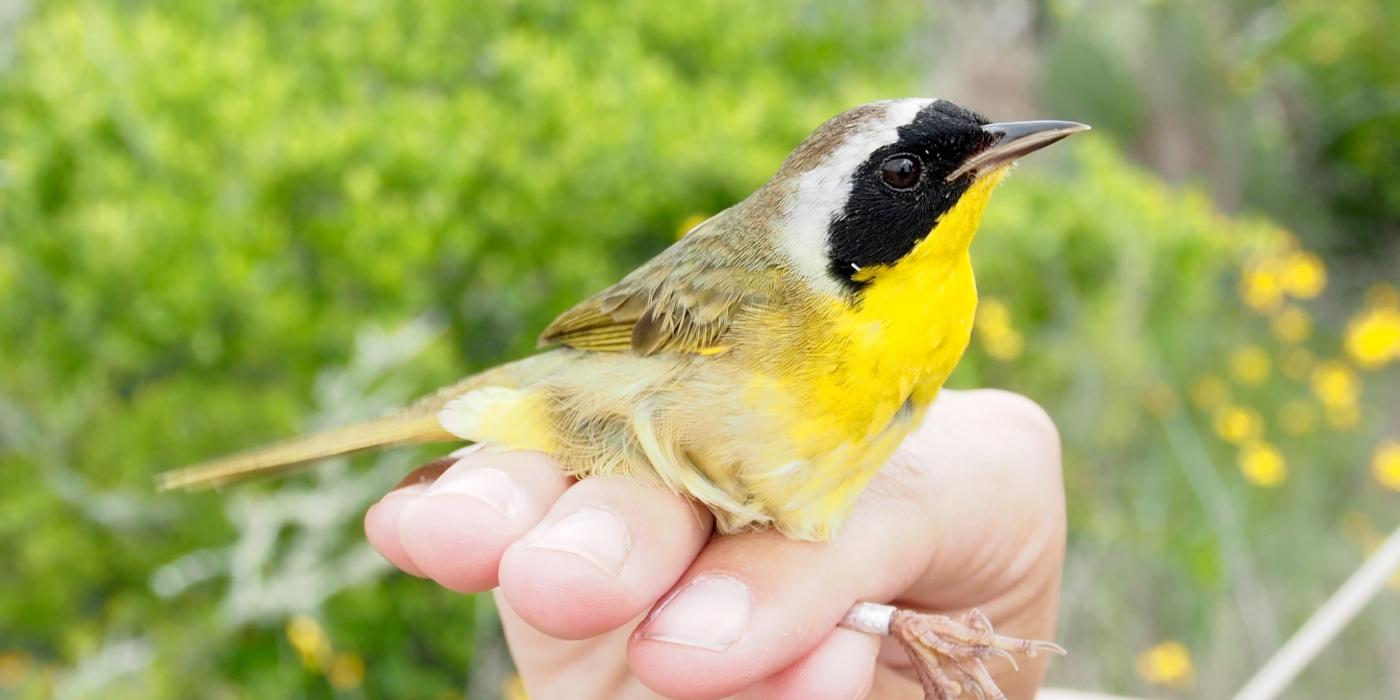Warbler in Disguise
Common Yellowthroat

On a cool spring morning in downtown Baltimore this year, the breeze was blowing and the hustle and bustle of an urban city were evident. A jackhammer pounded away just a few feet from me as I stood on the sidewalk at the bus dropoff by the aquarium. Hundreds of school children swarmed around me. Behind them, rush hour was at a peak, cars, taxis, trucks, and buses all noisily driving past. This might be the last place one might expect to find a migratory songbird.
But in a small, landscaped flowerbed, sandwiched between the bus dropoff and the ticket offices, I spotted a small bird hopping between the bunches of ornamental grasses. His bright yellow throat, black mask, and olive upperparts identified him as a Common Yellowthroat.
Normally the yellowthroat skulks in thick, brushy, wet areas such as the edges of fields, streamsides, and marshes. The bird I saw was obviously in transit. He likely flew most of the night, heading for his breeding territory, and found himself over a city at dawn. The little patch of vegetation next to the bus stop probably served as his home until nightfall, when his migratory journey began anew.
Such an endearing, colorful bird looks out of place among the drab urban birds—house sparrows, starlings, and pigeons—but perhaps he believes that his black mask is a disguise?
In fact, the male yellowthroat's black mask is quite appealing to female yellowthroats. Not only are males with larger masks more likely to gain a partner with whom to raise a family, neighboring females also find large masks irresistible. Female yellowthroats will dally with males who have larger masks than their partners. Males with large masks therefore sire a greater number of offspring than males with smaller masks. In the world of yellowthroats, size does matter.
Male yellowthroats are persistent singers. Their 'witchety-witchety-witchety' song is a familiar sound to most birdwatchers and is often the first clue to their presence. They often sing from an exposed perch. The calls include a harsh 'tscheck' and a chatter. These birds are quite loud considering their small size.
Yellowthroats range across North America in summer but are quite local in the dry desert southwest. Their nests are built on or close to the ground in dense vegetation. In winter they are distributed across the southern United States, Mexico, Central America, and the Caribbean, although a few attempt to winter in the northern United States.